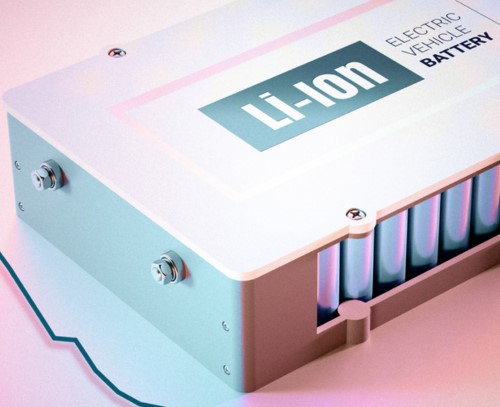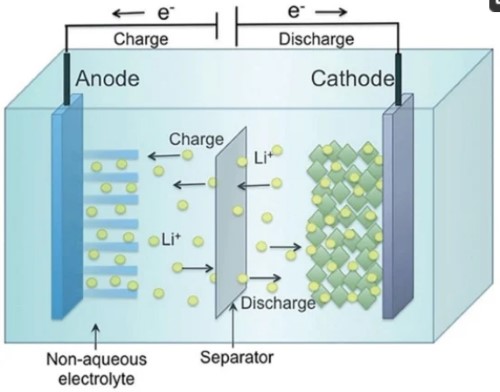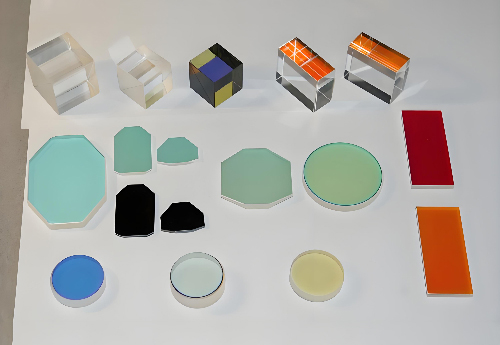Something You Should Know About Lithium-Ion Battery
Introduction
A lithium-ion batteries, often abbreviated as LIBs, are rechargeable energy storage devices that have become the gold standard for powering a wide range of modern technology. From our smartphones and laptops to electric vehicles and renewable energy storage systems, LIBs have transformed the way we use and store electrical energy. In this article, we will explore the pivotal role that LIBs play in these industries, providing a better understanding of their function principles, raw materials, advantages, and applications.
 [1]
[1]
Figure 1. Lithium-Ion Battery
Lithium-Ion Battery Operating Principles
Lithium-ion batteries utilize a remarkable electrochemical process. They operate on the principle of shuttling lithium ions (Li+) back and forth between two crucial components: the anode and the cathode. During the charging phase, lithium ions are extracted from the cathode and stored within the anode, creating a potential energy difference. In the discharge phase, when the battery is providing power, these ions flow back to the cathode through an electrolyte solution.
 [2]
[2]
Figure 2. Li-ion Battery Structure
Lithium-Ion Battery Materials
In the electrochemical process, different LIB materials are carefully selected and engineered to maximize the battery's performance, energy density, and overall efficiency. Here are the primary components of lithium-ion battery materials:
--Anode Materials
Anodes in LIBs are typically made of materials that can intercalate (absorb and release) lithium ions during charge and discharge cycles. Common anode materials include graphite and silicon.
l Graphite is the most commonly used anode material in commercial lithium-ion batteries for its stability and electrochemical performance.
l Silicon has a higher theoretical capacity for lithium storage compared to graphite. However, silicon's expansion and contraction during lithiation and delithiation cycles present engineering challenges.
--Cathode Materials:
Cathodes are another critical component and determine the battery's voltage and capacity. Different cathode materials have varying voltage plateaus and energy densities.
l Lithium cobalt oxide (LiCoO2) has been widely used in early-generation LIBs, especially in consumer electronics. It offers good energy density but is less common in high-capacity and high-power applications due to safety concerns and cost.
l Lithium iron phosphate (LiFePO4) is known for its safety and long cycle life. It is often used in electric vehicles and renewable energy storage systems where safety and longevity are critical.
l Lithium nickel cobalt manganese oxide (NCM) cathodes and lithium nickel cobalt aluminum oxide (NCA) cathodes are commonly used in electric vehicle batteries. They offer a balance between energy density and power density.
l Lithium manganese oxide (LMO) is valued for its thermal stability and safety, making it suitable for applications where temperature management is a concern.
--Electrolyte:
The electrolyte is the conductive medium that allows lithium ions to move between the anode and cathode during charge and discharge. Common electrolytes include lithium salts dissolved in organic solvents, but solid-state electrolytes are being developed for improved safety and energy density.
--Separator:
Separators are porous membranes that physically separate the anode and cathode while allowing the passage of lithium ions. They are typically made of polyethylene (PE) or polypropylene (PP) and play a critical role in preventing short circuits and enhancing safety.
Lithium-Ion Battery Advantages
Lithium-ion batteries offer a multitude of advantages that have made them the preferred choice for a wide range of applications. Here are some of the key advantages of LIBs.
l Efficiency: LIBs have a high energy density, are rechargeable, and have a low self-discharge rate.
l Durability: LIBs can operate effectively in a wide range of temperatures, from sub-zero cold to high heat. They have a long cycle life, meaning they can undergo numerous charge and discharge cycles before experiencing significant capacity degradation.
l Sustainability: LIBs produce lower emissions and have a smaller environmental footprint compared to some alternative energy storage solutions.
l Safety: Modern LIBs incorporate safety features such as thermal protection, overcharge protection, and built-in battery management systems (BMS) to monitor and manage battery performance and safety.
Lithium-Ion Battery Applications
These advantages have positioned lithium-ion batteries as a dominant force in the energy storage market, driving innovations across a broad spectrum of applications:
l Consumer Electronics: LIBs power our smartphones, tablets, laptops, cameras, and countless other portable devices, providing the long-lasting and high-performance energy source needed for our increasingly connected lives.
l Electric Vehicles (EVs): LIBs are integral to the electric mobility revolution, serving as the primary energy storage system in electric cars. Their ability to store large amounts of energy and deliver it efficiently has propelled the growth of the EV market.
l Renewable Energy Storage: These batteries are crucial for storing electricity generated by renewable sources such as solar panels and wind turbines. This stored energy can be used during periods of low renewable energy production or during peak demand.
l Aerospace: LIBs are used in aerospace applications, including powering satellites, spacecraft, and unmanned aerial vehicles (UAVs), where their high energy density and reliability are essential.
l Medical Devices: They are employed in medical equipment, ensuring that critical devices like implantable cardiac defibrillators (ICDs) and portable medical monitors remain operational when needed most.
Conclusion
In summary, lithium-ion batteries have ushered in a transformative era of cleaner, more efficient, and sustainable energy solutions. These remarkable energy storage devices have revolutionized how we power our devices, vehicles, and renewable energy systems, leaving an indelible mark on various industries with high energy density, durability, and versatility.
A variety of lithium-ion battery materials are on sale at Stanford Advanced Materials (SAM), including lithium nickel cobalt manganese oxide (NCM), lithium nickel cobalt aluminum oxide (NCA), lithium cobalt oxide (LCO), lithium iron phosphate (LFP), etc. Send us an inquiry if you are interested.
Reference:
[1] Chandler, D. L. (2023, March 23). Study reveals plunge in lithium-ion battery costs. MIT News. Retrieved September 12, 2023, from https://news.mit.edu/2021/lithium-ion-battery-costs-0323
[2] Ghiji, M.; Novozhilov, V.; Moinuddin, K.; Joseph, P.; Burch, I.; Suendermann, B.; Gamble, G. A Review of Lithium-Ion Battery Fire Suppression. Energies 2020, 13, 5117. https://doi.org/10.3390/en13195117




